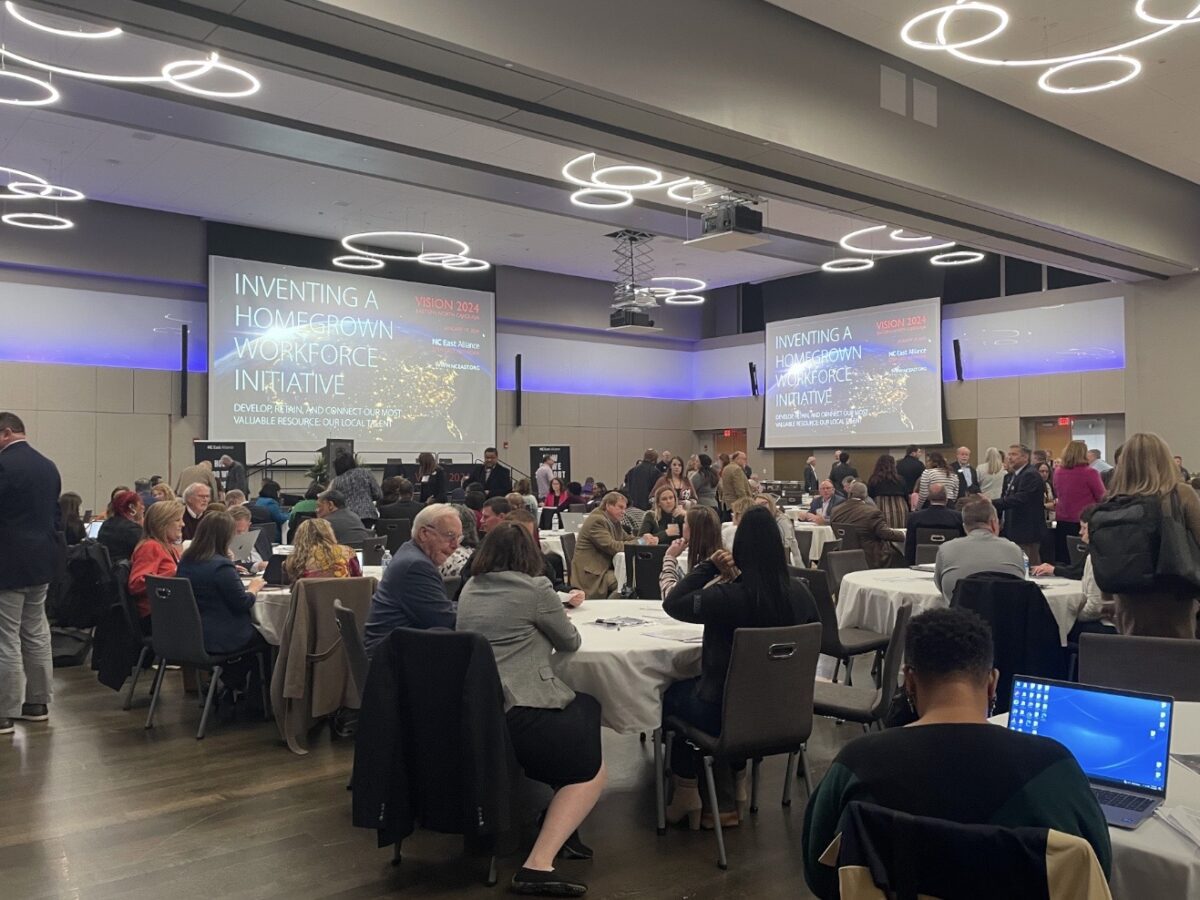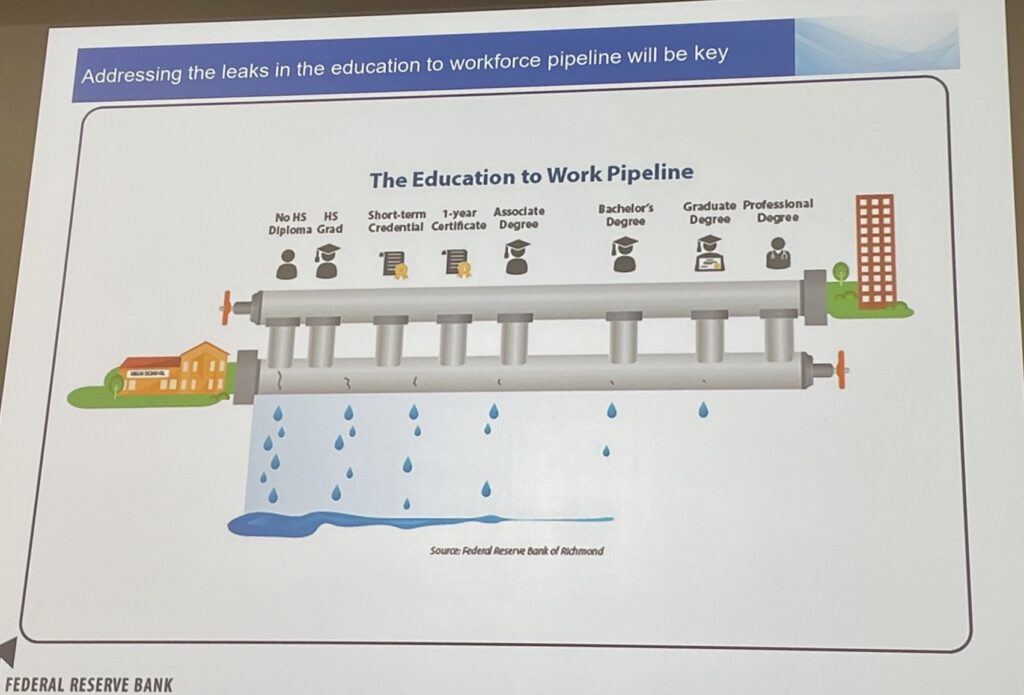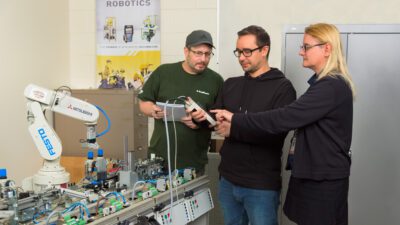

|
|
Over 300 people gathered on East Carolina University’s campus this month for the Vision 2024 conference to discuss workforce and economic development through STEM and education in eastern North Carolina.
The conference, held by N.C. East Alliance, was the second ever event of its kind.
The event hinged on the STEM East Industry In Schools Initiative, a partnership between schools, community colleges, and industry across 29 counties. The program includes 29 school districts and 10 community colleges.
STEM East works with these schools in order to promote learning and growth in the STEM fields to foster a well-prepared and well-educated workforce. The program involves collaboration between regional STEM employers and presidents of community colleges and superintendents of school districts.
The pillars that guide STEM East include STEM Schools of Distinction, “Industry in Schools” clusters, advanced technological education, and regional career and job fairs.
The day featured panels and speakers, including keynote speaker Laura Ullrich, senior regional economist with The Federal Reserve Bank of Richmond, who provided an economic update for those present while highlighting what a critical role education plays in maintaining a healthy economy.
Ullrich highlighted what she called the “education to work pipeline,” which demonstrates how more education tends to lead to employment and better income.
“What we do know from data is the more education you consume in general, the higher your wage is going to be. So we want to encourage students to get as far along this pipeline as they can,” Ullrich said.
This pipeline can feature several “leaks” at the lower end of the education continuum, she said, leading to unemployment.
“The problem is that this pipeline is leaky, people are leaking out. So we know through data that people without a high school degree, less than 50% of them are in the labor force,” Ullrich said. “Less than 50%. So think about that. When we have kids in our communities that don’t complete high school, that once they leave, there is a less than 50% chance that that person ends up in the labor force. That’s a problem.”


In 2019, North Carolina created the 2030 Attainment Goal, a goal set on having 2 million 25-44 year old residents in the state to have achieved a postsecondary degree or industry-valued credential by 2030.
Ullrich likened the current labor market emerging from the pandemic to that of the post-World War II era as there remains a high demand for goods and services, but a limited labor supply.
Though employment in the U.S. is higher than levels from before COVID, the nation is still dealing with a labor shortage, according to Ullrich.
“Those things can happen simultaneously,” Ullrich said.
Falling birth rates in the country could also contribute to fewer high school graduates possibly as soon as 2025, Ullrich said.
“That is going to put a lot of pressure on higher education institutions. Because a lot of higher education — the majority of higher education institutions in the United States — are in the place where population is really falling, like the Northeast and the Midwest,” Ullrich said.
According to Carolina Demography, birth rates in North Carolina increased after a decline in 2020, but the total fertility rate, or the average number of children a person would have throughout their life, is at 1.71 as of 2021, lower than the rate of 2.1 required to maintain the population without folks moving into the state from elsewhere.
Ullrich said in North Carolina, metro areas like Raleigh and Charlotte are driving growth in labor and business for the state. But that isn’t the case for all North Carolina counties, she said, especially in rural areas that may be facing declines in population and employment opportunities.
Panelist Wesley Beddard of STEM East said teachers are the key and crucial solution to two trends that cause challenges in Eastern North Carolina: the best and brightest leaving for other opportunities elsewhere, and those staying who lack the skills or understanding to attain jobs where they are currently located.
“They (teachers) are the best conduit to reach the students,” Beddard said. “And that’s what we have to do.”
Panelist Dr. José Garcia, director of K-12 curriculum and STEM education for Greene County Schools, said that educators must be deliberate in their curriculums to instill valuable career skills while also exposing students to ideas and cultures different from their own.
Garcia said Greene County Schools has held STEM leadership academies for teachers to help promote STEM education in schools to better prepare students.
“Now we have actually hosted over 25 different school districts from as far away as Charlotte all the way to the coast. And we just share some of our best practices, share with them how to get going with STEM education in their school district,” Garcia said.
Panelist Dr. Jennifer Stalls, district STEM Coordinator for Pitt County Schools, said students learn best when they are engaged in learning, and much of that happens through partnerships.
“We love partnering with our local industry partners, higher education organization(s), to empower teachers to provide engaging lessons for students. And that is an advantage for us because we see that the gains when students are engaged in what they’re doing, they see why behind the content, and they eliminate the silos that we typically see core content taught in,” Stalls said.





